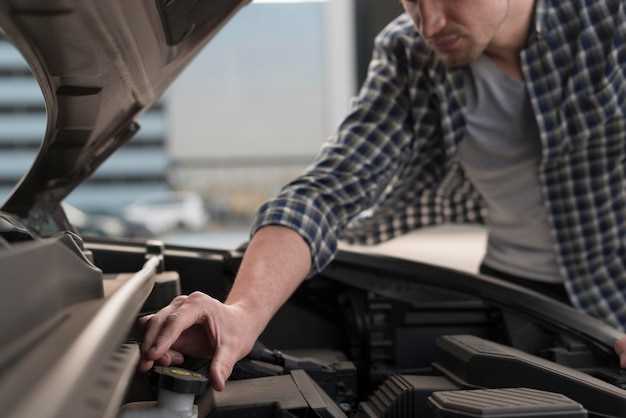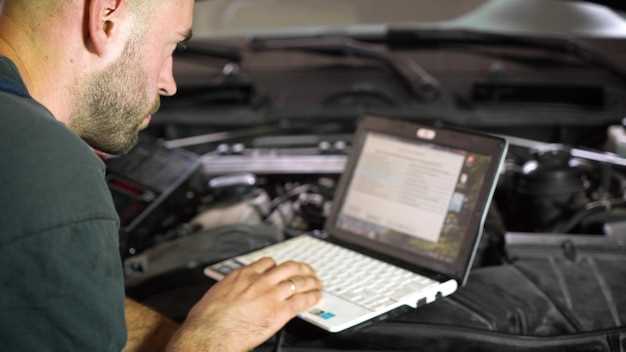
The alternator is a vital component of your BMW’s electrical system, responsible for charging the battery and powering various electrical systems while the engine is running. When the alternator begins to fail, it can lead to a cascade of electrical issues that may affect the performance and reliability of your vehicle. Understanding the symptoms of alternator failure can help you address problems early and avoid more costly repairs down the line.
Common symptoms of a failing alternator include dimming headlights, flickering dashboard lights, and unusual noises coming from the engine bay. Additionally, you may notice difficulties in starting the vehicle, or the battery warning light may illuminate on your dashboard. Recognizing these signs early is crucial, as neglecting them can lead to a complete alternator failure, leaving you with a non-operational vehicle.
In this article, we will explore the common symptoms associated with BMW alternator failure in detail, and provide solutions to diagnose and address these issues effectively. By gaining a better understanding of your alternator’s role and the warning signs of malfunction, you can take preventative measures to ensure your BMW remains in peak condition.
Identifying Key Indicators of Alternator Malfunction in BMW Vehicles

Recognizing the signs of alternator failure in BMW vehicles is crucial for maintaining the overall performance and reliability of the electrical system. One of the primary indicators is the presence of a flickering or dimming dashboard light. This symptom often suggests that the alternator is struggling to provide consistent voltage. If the warning light, commonly associated with battery or electrical issues, illuminates, it may indicate impending alternator failure.
Another key indicator is unusual electrical behavior. If various electrical components, such as headlights, power windows, or the audio system, exhibit intermittent functionality, this may point to a failing alternator. A sudden decrease in battery power, especially after short trips, is also a significant warning sign. This situation often arises because the alternator is not adequately charging the battery during engine operation.
Additionally, if you notice strange noises, such as grinding or whining sounds coming from the area near the alternator, this could indicate internal damage or bearing failure. These noises should not be ignored, as they typically precede more severe mechanical issues.
Lastly, a visual inspection can reveal critical insights. Look for signs of burnt wiring, corrosion, or damaged connectors around the alternator. These physical indicators can impact electrical performance and may be the root cause of malfunction.
Step-by-Step Guide to Testing Your BMW’s Alternator
Testing your BMW’s alternator is essential for ensuring the proper functioning of the vehicle’s electrical system. This process can help identify issues before they lead to complete failure. Follow these steps to accurately test your alternator.
Step 1: Safety First
Before you begin, ensure that the vehicle is parked on a stable surface and that the engine is turned off. Engage the parking brake and wear safety glasses to protect your eyes from potential electrical sparks.
Step 2: Locate the Alternator
Open the hood of your BMW and locate the alternator. It is typically found near the front of the engine and is connected to the battery through a series of cables.
Step 3: Inspect the Alternator
Check for any visible signs of damage such as frayed wires, corrosion, or loose connections. Any indications of wear can lead to malfunction and should be noted before proceeding with the test.
Step 4: Use a Multimeter
To test the alternator, use a multimeter set to the DC voltage setting. With the engine off, connect the positive lead to the alternator’s positive terminal and the negative lead to the body of the alternator. A reading below 12.5 volts indicates a potential issue.
Step 5: Start the Engine
Start your BMW’s engine and allow it to idle. Then, recheck the multimeter readings. A functional alternator should produce between 13.7 and 14.7 volts. If the voltage is below this range, your alternator may not be charging the battery effectively.
Step 6: Load Test
To further assess the alternator’s condition, perform a load test. Activate electrical components such as headlights, air conditioning, and the radio. Observe the multimeter; if the voltage drops significantly below 13.7 volts during this test, the alternator may be failing.
Step 7: Check Battery Voltage
After completing the alternator test, turn off the engine and measure the battery voltage using the same multimeter. The reading should be around 12.6 volts. If the battery voltage is low, it may need replacing, which can also impact alternator performance.
Step 8: Professional Assessment
If you suspect that your BMW’s alternator is malfunctioning but cannot determine the issue, consult a qualified technician. They can perform more comprehensive diagnostics to confirm any problems.
Regular testing and monitoring of your BMW’s electrical system can prevent unexpected breakdowns. Follow these steps to ensure your alternator is functioning correctly and maintain the overall health of your vehicle.
Common Repairs and Replacement Options for BMW Alternators

When diagnosing BMW alternator issues, it is essential to consider common repairs and replacement options. A failing alternator can lead to various electrical problems, including battery drain and poor performance of electrical components.
One common repair involves the replacement of the alternator’s voltage regulator. This component controls the output voltage generated by the alternator. If it malfunctions, the alternator may either overcharge or undercharge the battery, leading to premature battery failure.
Another option is to replace worn-out bearings within the alternator. Noisy operation or excessive vibration can indicate bearing wear. Replacing these bearings can restore functionality and extend the alternator’s lifespan.
In some cases, soldering or repairing damaged wiring connections can resolve issues without needing a full alternator replacement. Poor connections can disrupt the alternator’s performance and can often be fixed without significant costs.
However, if the alternator is significantly worn or damaged, a complete replacement may be necessary. When selecting a new alternator for your BMW, it’s crucial to choose quality parts to ensure compatibility and reliability. Genuine BMW parts or high-quality aftermarket options are recommended to maintain performance and durability.
Lastly, regular maintenance checks can help avoid premature alternator failure. Keeping the electrical system in good condition and addressing issues promptly will improve the longevity of your BMW’s alternator.



